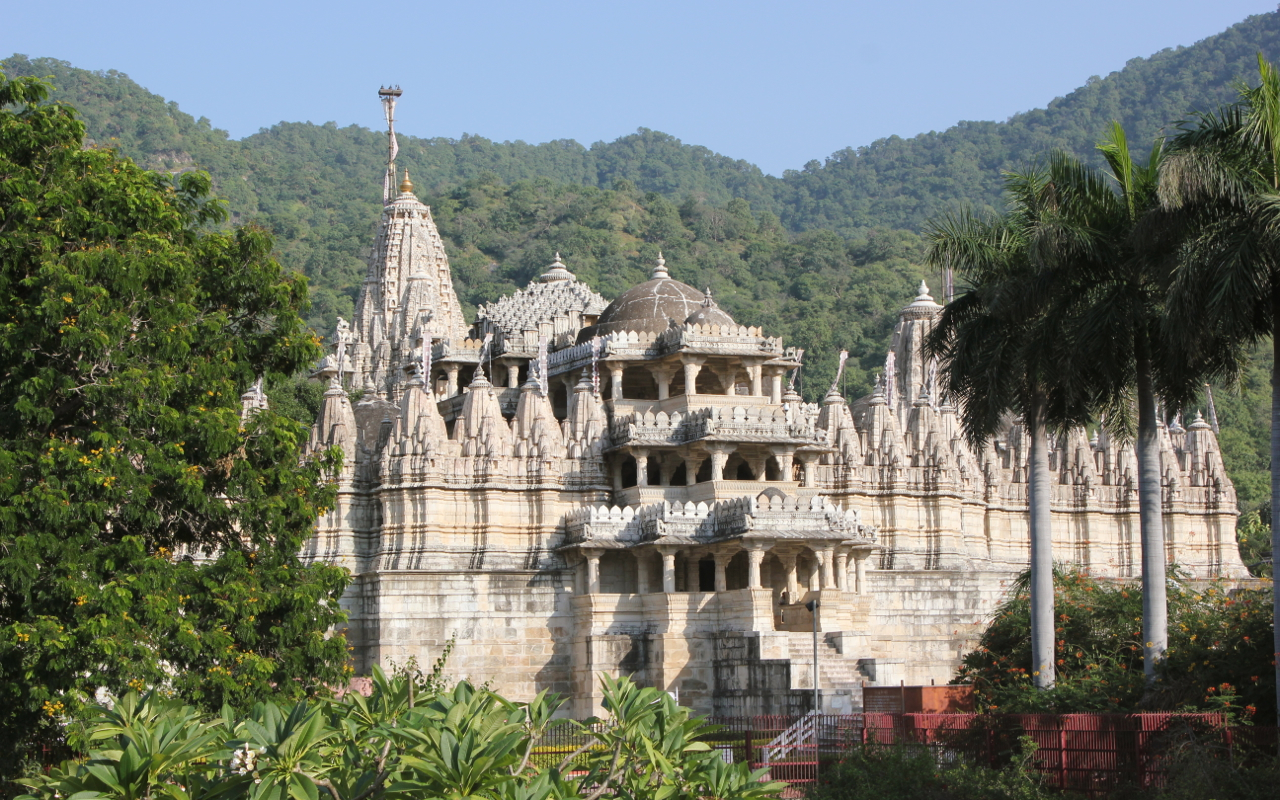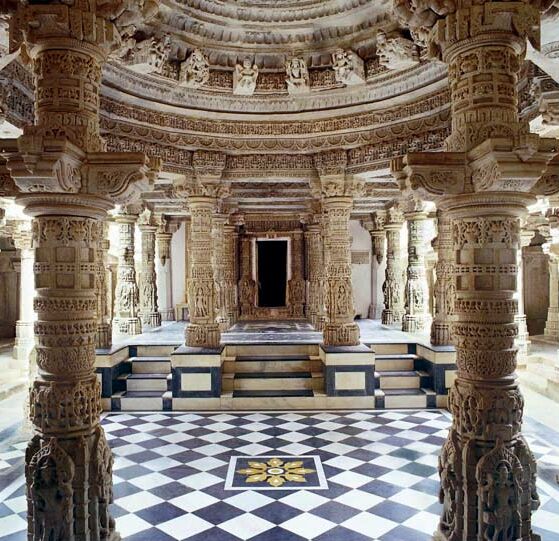|
Manastambha
In Jainism, a ''manastambha'' () is a pillar that is often constructed in front of Jain temples or large Jain statues. In North India, they are topped by four Tirthankara images. According to the ''Digambara'' Jain texts like '' Adi Purana'' and ''Tiloyapannati'', a huge ''manastambha'' stands in front of the '' samavasarana'' (divine preaching hall) of the tirthankaras, which causes someone entering a ''samavasarana'' to shed their pride. A monolithic manastambha is a standard feature in the Jain temples of Moodabidri. They include a statue of Brahmadeva on the top as a guardian yaksha. Examples Some of the well known Jain manastambhas are: * Kirti Stambha of Chittorgarh. The Vijaya Stambha was inspired by this. * Manastambhas of Devagarh * Manastambhas of Moodabidri * Manastambhas of Shravanabelagola * Manastambha at Shikharji at Madhuvan Manastambhas in South India are generally monolithic. Photo gallery File:Hutessing Temple3 Ahmedabad.JPG, Kirti Stambha of Hu ... [...More Info...] [...Related Items...] OR: [Wikipedia] [Google] [Baidu] |
Jainism
Jainism ( ), also known as Jain Dharma, is an Indian religions, Indian religion whose three main pillars are nonviolence (), asceticism (), and a rejection of all simplistic and one-sided views of truth and reality (). Jainism traces its spiritual ideas and history through the succession of twenty-four , supreme preachers of ''dharma''. The first in the current time cycle is Rishabhadeva, who tradition holds lived millions of years ago; the 23rd is Parshvanatha, traditionally dated to the 9th century Common Era, BCE; and the 24th is Mahāvīra, Mahavira, who lived . Jainism is considered an eternal ''dharma'' with the guiding every time cycle of the Jain cosmology, cosmology. Central to understanding Jain philosophy is the concept of ''bhedavijñāna'', or the clear distinction in the nature of the soul and non-soul entities. This principle underscores the innate purity and potential for liberation within every Jīva (Jainism), soul, distinct from the physical and menta ... [...More Info...] [...Related Items...] OR: [Wikipedia] [Google] [Baidu] |
Lal Mandir
Sri Digambar Jain Lal Mandir () is the oldest and best-known Jain temple in Delhi, India. It is directly across from the Red Fort in the historical Chandni Chowk area. The temple is known for an avian veterinary hospital, called the Jain Birds Hospital, in a second building behind the main temple. Located just opposite the massive Red Fort at the intersection of Netaji Subhas Marg and Chandni Chowk, Digambar Jain Temple is the oldest Jain temple in the capital. According to Jain scholar Balbhadra Jain's compendium of Digambar Jain shrines in India, it was built in 1656. History Old Delhi was founded by Mughal Emperor Shah Jahan (1628–1658) who built what is commonly known as the old city or walled city, surrounded by a wall, with the main street Chandni Chowk in front of the Red Fort, the imperial residence. Shah Jahan invited several Agrawal Jainlandlords to come and settle in the city and granted them some land south of the Chandani Chowk around Dariba Gali. Accord ... [...More Info...] [...Related Items...] OR: [Wikipedia] [Google] [Baidu] |
Moodabidri
Moodubidire (''Mūḍubidire''; also called Mudbidri, Moodbidri and Bedra) is a town and taluk in Dakshina Kannada district. It lies 34 km northeast of the district headquarters, Mangalore, in Karnataka, India. Because of widely grown bamboo in ancient days, this place was named as ''Moodubidire''. ''Moodubidire'' comes from two Kannada words, ''Moodu'' "east" and ''Bidiru'' "bamboo". Its average elevation is . Demographics India census, Moodabidri had a population of 25,710. Males constitute 48% of the population and females 52%. Moodabidri has an average literacy rate of 88.57%, Male literacy is 93.13%, and female literacy is 84.13%. Moodabidri basically contains two villages: Pranthya and Marnad. Moodabidri is also called as " Jaina Kashi of the South". Location Moodabidri is on National Highway 169 (old NH 13). It is accessible from Mangalore city (34 km away) by road. Mangalore International Airport is 23 km away from Moodabidri. It is 54 k ... [...More Info...] [...Related Items...] OR: [Wikipedia] [Google] [Baidu] |
Saavira Kambada Basadi
Saavira Kambada Temple () or Tribhuvana Tilaka Cūḍāmaṇi), is a ''basadi'' or Jain temple noted for its 1000 pillars in Moodabidri, Karnataka, India. The temple is also known as "Chandranatha Temple" since it honours the tirthankara Chandraprabha, whose eight-foot idol is worshipped in the shrine. The town of Moodabidri is noted for its 18 Jain temples, but Saavira Kambada Temple is considered the finest among them. The temple is considered an architectural wonder and is a major attraction of Moodabidri. History The Basadi was built by the local chieftain, Devaraya Wodeyar in 1430 and took 31 years to complete, additions to temples were made in 1962. The shrine has a 50 feet tall monolith manasthambha erected by Karkala Bhairava Queen Nagala Devi. Architecture The temple is considered an architectural wonder. The temple is full of elaborate sculptures and decoration. The doorway of the temple has intricate carvings and is enclosed with ornate walls. The massive pillar ... [...More Info...] [...Related Items...] OR: [Wikipedia] [Google] [Baidu] |
Shravanabelagola
Shravanabelagola (pronunciation: ) is a town located near Channarayapatna of Hassan district in the Indian state of Karnataka and is from Bengaluru. The Gommateshwara Bahubali statue at Shravanabelagola is one of the most important tirthas (pilgrimage destinations) in Jainism, one that reached a peak in architectural and sculptural activity under the patronage of Western Ganga dynasty of Talakad. Chandragupta Maurya is said to have died on the hill of Chandragiri, which is located in Shravanabelagola, in 298 BCE after he became a Jain monk and assumed an ascetic life style. Gommateshwara statue, Akkana Basadi, Chandragupta basadi, Chamundaraya Basadi, Parshvanath Basadi and inscriptions of Shravanabelagola group of monuments are listed as Adarsh Smarak Monument by Archaeological Survey of India. Location Shravanabelagola is located at to the south-east of Channarayapatna in the Channarayapatna taluk of Hassan district of Karnataka. It is at a distance of south- ... [...More Info...] [...Related Items...] OR: [Wikipedia] [Google] [Baidu] |
Hutheesing Jain Temple
Hutheesing Temple is a Jain temple in Ahmedabad in Gujarat, India. It was constructed in 1848 by the Hutheesing family. The temple blends the old Maru-Gurjara temple architecture style with new architectural elements of ''haveli'' in its design. History The construction of the temple was originally planned and initiated by Hutheesing Kesarisinh, a wealthy trader of Ahmedabad. Following his death at the age of 49, the construction was supervised and completed by his wife, Harkunwar. The total cost was approximately . The chief temple architect was Premchand Salat. The temple is located outside the Delhi Darwaza. Lockwood de Forest, who was a business associate of Muganbhai Hutheesing, the son of Sheth Hutheesing, estimated the cost as "over a million dollars". The temple was built during a severe famine in Gujarat. Building the temple employed hundreds of skilled artisans which supported them for a period of two years. The temple is managed by a Hutheesing family trust. ... [...More Info...] [...Related Items...] OR: [Wikipedia] [Google] [Baidu] |
Tirtha (Jainism)
In Jainism, a ''tīrtha'' ( " ford, a shallow part of a body of water that may be easily crossed") is used to refer both to pilgrimage sites as well as to the four sections of the ''sangha''. A ''tirtha'' provides the inspiration to enable one to cross over from worldly engagement to the side of ''moksha''. Jain ''tirthas'' are located throughout India. Often a ''tirtha'' has a number of temples as well as residences (dharmashala) for the pilgrims and wandering monks and scholars. Types ''Tirtha'' sites include: * ''Siddhakshetra''s or site of ''moksha'' liberation of an '' arihant'' (''kevalin'') or Tirthankaras like Ashtapada Hill, Shikharji, Girnar, Pawapuri, Palitana, Mangi-Tungi and Champapuri (capital of Anga) * ''Atishayakshetra''s where divine events have occurred like Mahavirji, Rishabhdeo, Kundalpur, Aharji etc. * ''Puranakshetra''s associated with lives of great men like Ayodhya, Vidisha, Hastinapur, and Rajgir * ''Gyanakshetra'': associated with famous '' ... [...More Info...] [...Related Items...] OR: [Wikipedia] [Google] [Baidu] |
Jain Temple
A Jain temple, Derasar (Gujarati: દેરાસર) or Basadi (Kannada: ಬಸದಿ) is the place of worship for Jains, the followers of Jainism. Jain architecture is essentially restricted to temples and monasteries, and Jain buildings generally reflect the prevailing style of the place and time they were built. Jain temple architecture is generally close to Hindu temple architecture, and in ancient times Buddhist architecture. Normally the same builders and carvers worked for all religions, and regional and periodic styles are generally similar. For over 1,000 years, the basic layout of a Hindu or most Jain temples has consisted of a small garbhagriha or sanctuary for the main murti or idol, over which the high superstructure rises, then one or more larger mandapa halls. Māru-Gurjara architecture or the "Solanki style", is a particular temple style from Gujarat and Rajasthan (both regions with a strong Jain presence) that originated in both Hindu and Jain temples a ... [...More Info...] [...Related Items...] OR: [Wikipedia] [Google] [Baidu] |
Ajmer Jain Temple
The Ajmer Jain temple, also known as Soniji Ki Nasiyan, is a Jain temple known for its architecture. It was built in the late nineteenth century. The main chamber, known as the Swarna Nagari "City of Gold", has several gold-plated wooden figures, depicting several figures in the Jain religion. This golden chamber of the temple uses 1,000 kg of gold to carve out a depiction of Ayodhya. Kurt Titze, in his book, "Jainism: A Pictorial Guide to the Religion of Non-Violence" (1998, p. 143), writes on Soniji Ki Nasiyan: History Greatly revered by the Digambar sect of the Jains, the Nasiyan temple is dedicated to Rishabhdev, the first of the 24 tirthankara by Rai Bahadur Seth Moolchand and Nemichand Soni. It is situated on Prithvi Raj Marg in Ajmer, the heart of Rajasthan state in India. The foundation of this magnificent Jain temple was laid on 10 October 1864 and the image of Rishabhdev (Adinath), was installed in the Sanctum Sanctorum on 26 May 1865. This work was car ... [...More Info...] [...Related Items...] OR: [Wikipedia] [Google] [Baidu] |
Desur
Desur is a Town panchayat in Tiruvanamalai district in the Indian state of Tamil Nadu. Geography Desur is located at . It has an average elevation of 114 metres (374 feet). Demographics India census A census (from Latin ''censere'', 'to assess') is the procedure of systematically acquiring, recording, and calculating population information about the members of a given Statistical population, population, usually displayed in the form of stati ..., Desur had a population of 5,156. Males constitute 55% of the population and females 45%. Desur has an average literacy rate of 70%, higher than the national average of 59.5%: male literacy is 79% and, female literacy is 60%. In Desur, 10% of the population is under 6 years of age. References Cities and towns in Tiruvannamalai district Jain temples in Tamil Nadu {{Tiruvannamalai-geo-stub ... [...More Info...] [...Related Items...] OR: [Wikipedia] [Google] [Baidu] |
Jain Center Of Greater Phoenix
Jain Center of Greater Phoenix (JCGP) is a Jain temple in Phoenix, Arizona. It was established in 2008. It represents about 150 families in the Phoenix metro area. History Of the total Jain population in Phoenix, about half live in the East Valley. Most arrived in the 1980s, at which time they did not have a permanent meeting place and met in local elementary schools. In 2005, JCGP acquired 4 acres of land for building a Jain Temple in Phoenix. Pratistha event was held from December 20 to December 26, 2008. The temple is located at 6250 S. 23rd Ave. The Hindu community also has a temple on another four acres next to the Jain Center, known as the Shree Nathji temple. Architecture The building uses white Makrana marble on the inside. The primary deities have been brought in from India, 51-inch high statues of Mahavir and Adinath. Behind the primary deities, 24 inches have been carved out to include 15-inch-high statues of tirthankars. Above the sanctum sanctorum, a 61 feet p ... [...More Info...] [...Related Items...] OR: [Wikipedia] [Google] [Baidu] |





